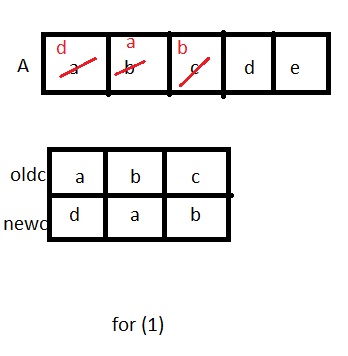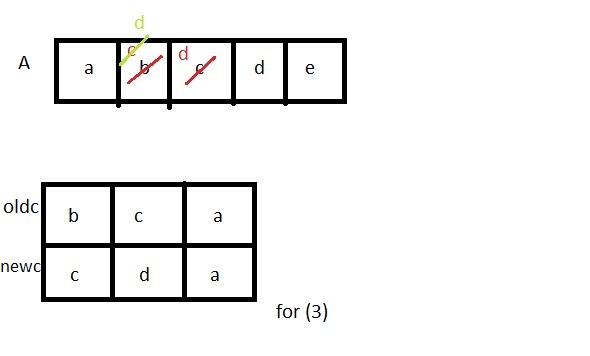
Here when the element of array $A$ and $oldc$ match , we replace that array element of $A$ with array element of $newc$ . For every element of $A$ array update occurs maximum one time.
Similarly for (2) array element of $A$ has updated with array element of $newc$ less than or equal to one time,

Now, for (3) when $i=0$ , value of $A$ match with $oldc[2]$ i.e.'$a$' , and replace with $newc[2]$ i.e. also '$a$'. So, no changes
when $i=1$ value of array $A[1]=$'$b$'
match with $oldc[0]=$'$b$' and replace with $newc[0]=$'$c$'.
Now, $A[1]=$'$c$' which equal with next element of $oldc[1]=$'$c$'.
So, replace again with $newc[1]=$'$d$'.
Now, we can say here in array $A[1]$ value replace with $newc[0]$ value , and that $newc[0]$ value replace with next $newc[1]$ value.

Similarly for (4) here $2$ times replacement for $A[0]$ with element $newc[0]$ and $newc[1]$
Updating of $newc$ value with another $newc$ value is calling flaw here
So Ans (C)